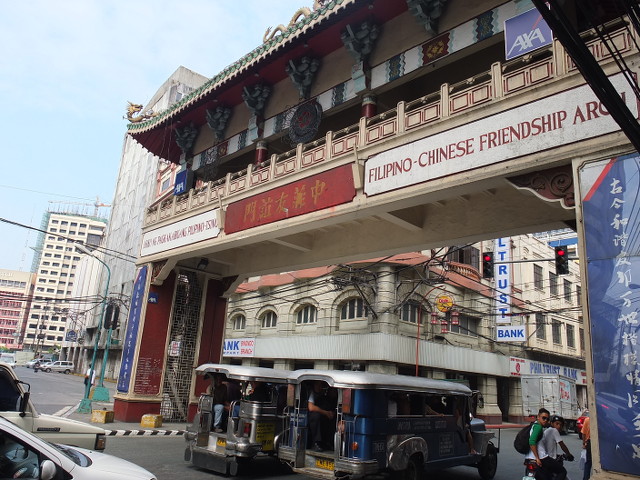SUMMARY
This is AI generated summarization, which may have errors. For context, always refer to the full article.

MANILA, Philippines – “Noir is about losers,” wrote mystery fiction editor Otto Penzler on Huffington Post.
Its setting is a pigsty of a world where its characters wallow in their own doom, are betrayed, cut open, raped and left for dead. The protagonists are rarely the “good guys” and usually bring their gruesome fate upon themselves. The reader walks through shadow and light, must sift through the muck of lies and (arbitrary) truths to reach the tale’s bitter end.
What better setting for noir fiction than Manila?
“Manila Noir,” an anthology of noir short stories edited by Jessica Hagedorn, offers the richness of the Philippine mega city to the noir genre. Through its 14 stories, I ran down grimy alleys in Tondo, posh subdivisions of the elite and underground passages in Intramuros bumping into “chop chop” ladies, konyo kid drug addicts, transexual prostitutes and even a Jesuit priest detective.
READ: Jessica Hagedorn uncovers ‘Manila Noir’
Weaving together this horrific tapestry of places and faces are some of the most talented Filipino writers today: Butch Dalisay, Lourd de Veyra, FH Batacan, Gina Apostol, Eric Gamalinda, Jessica Hagedorn, Sabina Murray, Lysley Tenorio, Marianne Viillanueva, Angelo Lacuesta, R. Zamora Linmark, Jonas Vitman and Rosario Cruz-Lucero. The anthology even includes a comic strip by “Trese” creators Budjette Tan and Kajo Baldisimo.
In reading “Manila Noir,” I sought out different faces of Metro Manila and got more than I bargained for.
Manila in the dark
The anthology starts in a place familiar to almost anyone who shops in Metro Manila: Greenbelt Mall in Makati depicted as the mecca for the city’s richest.
In Lysley Tenorio’s “Aviary,” a group of street kids takes revenge against the mall’s highbrow exclusivity.
The elements of social commentary in the story are unmissable. The downtrodden versus the privileged is a common theme in many of the stories.
In “Human Right” by Rosario Cruz-Lucero, a displaced Aeta tribal leader battles for supremacy against a Negros hacienda heiress. Nobody escapes the wrath of a powerful congressman after running off with his girl in Angelo Lacuesta’s “After Midnight.”
One can’t help but marvel at the powerful motivations inequality can breed, motivations that are perfect for noir fiction: jealousy, contempt, crab mentality, arrogance and disdain. Hence, the characters – despite living in our minds for only around 10 pages – become remarkably real and understandable despite the grueomeness of their actions.
Together, the stories mine the gloriously dirty potential of Manila’s most scandalous environs from Binondo’s “fortune-telling” industry to shabu warehouses in Quezon City.
But like any work of noir fiction, “Manila Noir” is deliciously unpredictable, featuring the most innocent of settings for some of its horrific scenes.
Butch Dalisay’s “The Professor’s Wife” is set in the otherwise calmly mundane Teacher’s Village in the University of the Philippines. Budjette Tan’s and Kajo Baldisimo’s “Trese” comics takes place mostly in the Metro Rail Transit System or MRT. The bloodsoaked affair in “Darling, You Can Count On Me” by Eric Gamalinda transpires above a beauty parlor in Santa Cruz, Manila.
Lourd de Veyra’s plot is deceptively simple, two crack addicts sharing funny anecdotes while indulging themselves in Quezon City.
Most of the stories elude traditional storytelling structures.
“Darling, You Can Count On Me” uses fictional newspaper clips to drive the sequence of events. Jessica Hagedorn’s “Old Money” employs a kind of “Choose Your Own Adventure” ending.
It is this variety that makes “Manila Noir” such an arresting read. Despite the overarching theme of noir, each story is a totally different world. Perhaps this is all thanks to the multifariousness of Manila itself and its wealth of compelling characters who range from saintlike to Satan-like. But it takes a rare mastery of craft to mine all the dramatic potential of these characters and locales.

Genre definitions
When Hagedorn wrote in her introduction to the book that the collection would “expand our concept of noir,” she wasn’t kidding.
For some of these stories, an argument can be made that they fall outside the realm of noir.
For instance, F.H. Batacan’s “Comforter of the Afflicted” has as its protagonist a Jesuit priest detective named Father Saenz. Though he is probably the gruffest, most jaded priest you’ll ever meet, he is still the story’s moral center, a no-no for noir fiction if you trust the words of Penzler.
Penzler makes the distinction: “A heroic figure stands at the center of the private eye novel; there are no heroic figures in noir fiction.”
The same argument can be made against “Trese,” which, aside from featuring a detective, also introduces paranormal and fantastical elements to noir. The growing genre of fantasy noir combines urban grime with the glitter and glow of magic and may not be acceptable to noir purists.
But in my book, these are more reasons to pick up the anthology. They are proof that noir is a genre every bit as kaleidoscopic, adaptive and, ultimately, timeless as Manila. – Rappler.com
“Manila Noir” is available in National Bookstore at P395.
Add a comment
How does this make you feel?

There are no comments yet. Add your comment to start the conversation.